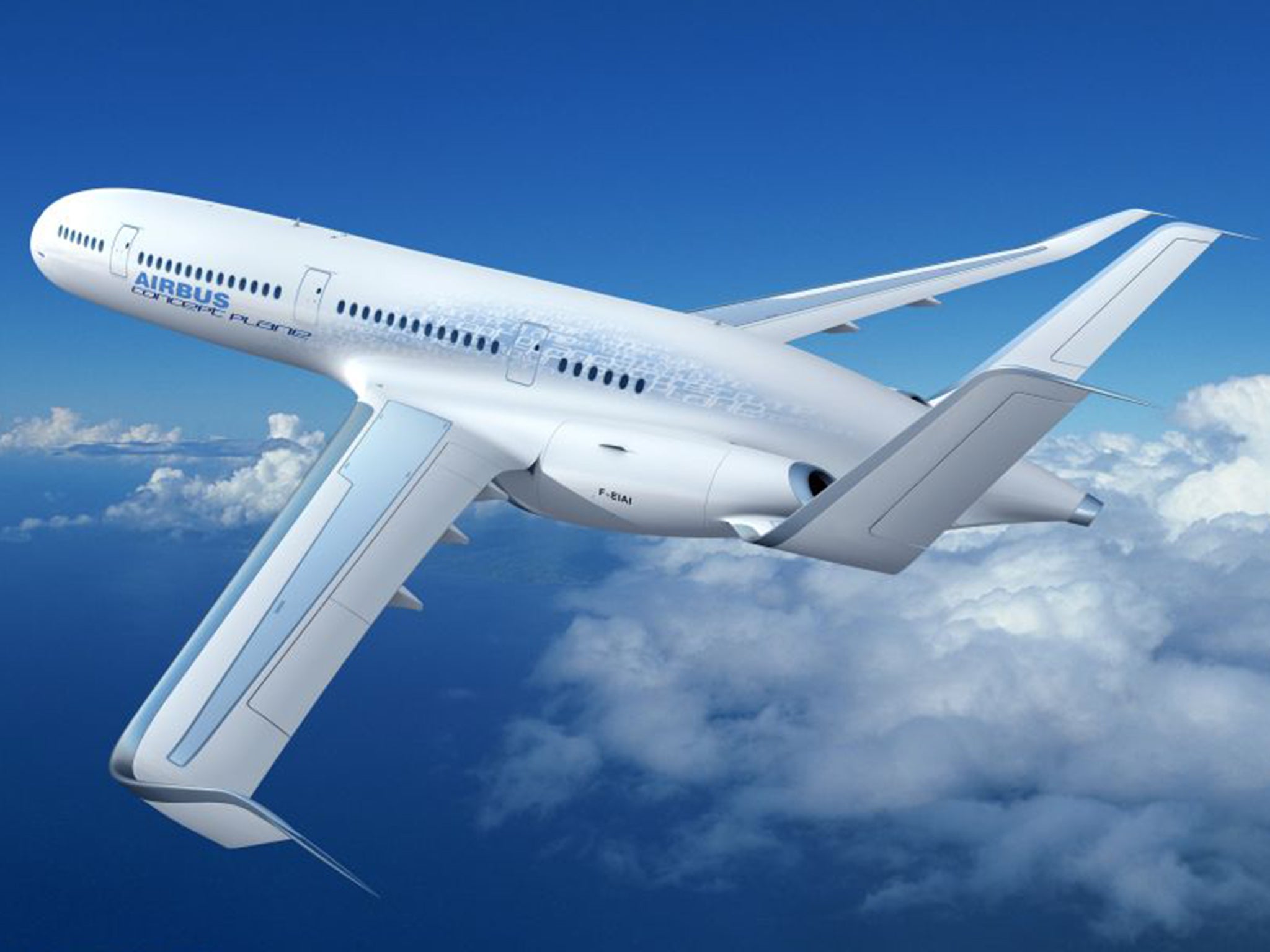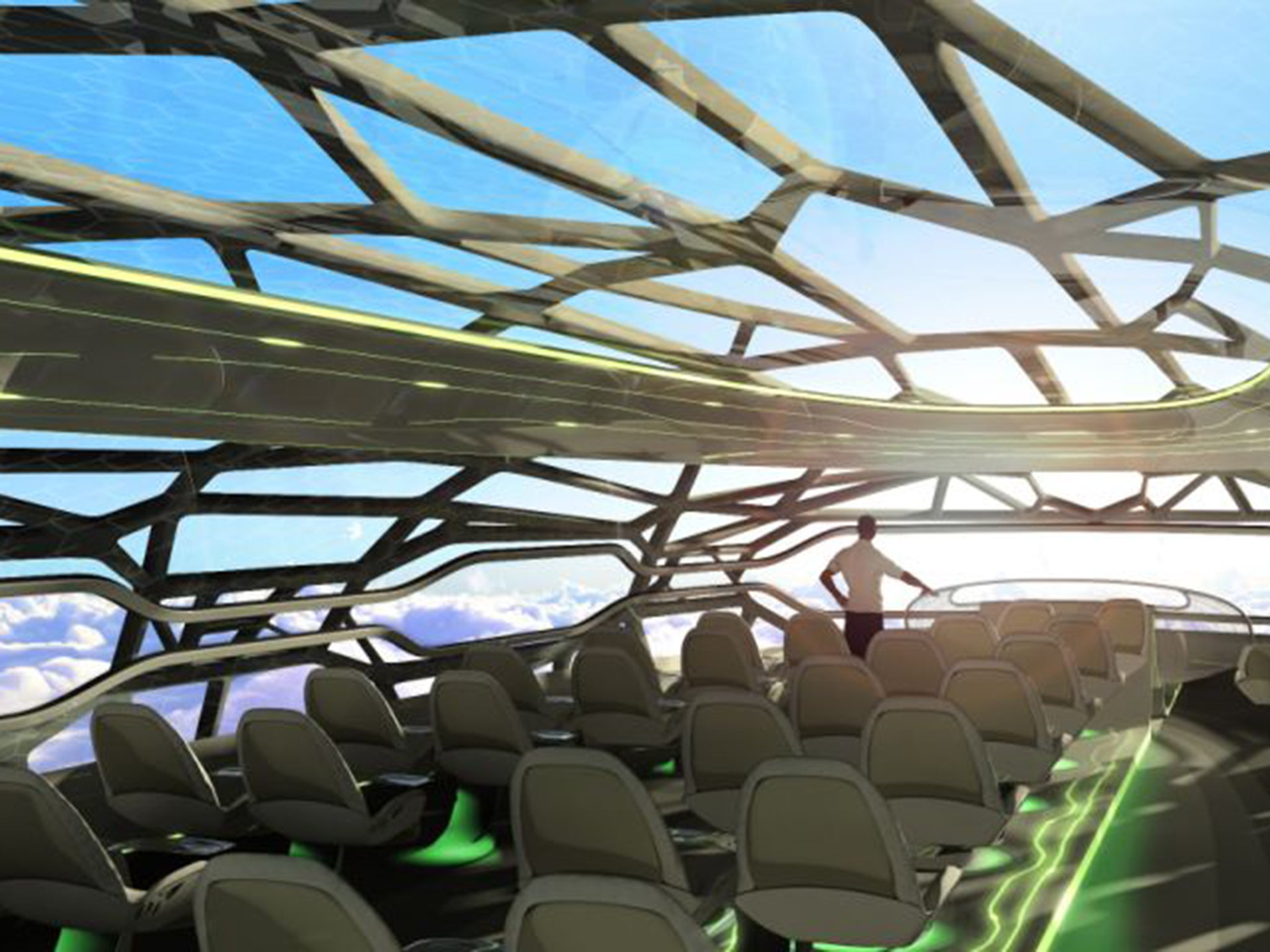Are plastic planes the future of flight? Heathrow expansion reopens debate over aviation's effects on the environment
Manufacturers are drawing up blueprints to make their aircraft greener

Your support helps us to tell the story
From reproductive rights to climate change to Big Tech, The Independent is on the ground when the story is developing. Whether it's investigating the financials of Elon Musk's pro-Trump PAC or producing our latest documentary, 'The A Word', which shines a light on the American women fighting for reproductive rights, we know how important it is to parse out the facts from the messaging.
At such a critical moment in US history, we need reporters on the ground. Your donation allows us to keep sending journalists to speak to both sides of the story.
The Independent is trusted by Americans across the entire political spectrum. And unlike many other quality news outlets, we choose not to lock Americans out of our reporting and analysis with paywalls. We believe quality journalism should be available to everyone, paid for by those who can afford it.
Your support makes all the difference.Battery-powered plastic aircraft without flight decks – could that be the clean, green future of flight?
The political furore this week over the Airports Commission’s recommendation to expand Heathrow has obscured a more profound debate about aviation’s weakest flank: the environment.
A third runway would increase flights at Europe’s busiest airport from 1,300 to 2,000 a day. But the commission’s final report acknowledges the high carbon cost of air travel: “Flying one passenger from London to New York and back generates roughly the same level of CO2 emissions as the average person in the EU does by heating their home for a whole year.”
Friends of the Earth’s head of campaigns, Andrew Pendleton, said proposals for a new runway should be shelved “if we’re to stop runaway global warming”.
Yet the commission also insists: “One new runway, even fully utilised, is compatible with continued progress towards reducing carbon emissions.” And at the press conference to launch its proposals, the chairman, Sir Howard Davies, said: “More efficient aircraft will offset the increased number of flights.”
To prove him right will require many changes, particularly in aircraft and engine design. The recent spike in oil prices forced airlines to focus even more closely on fuel efficiency. Average emissions per passenger carried are almost certain to fall marginally in the next decade because four-engined airliners such as the Boeing 747 are steadily being replaced by twin jets.
Boeing has also been evaluating liquefied natural gas as a replacement for kerosene. The fuel raises efficiency and cuts emissions, but would demand massive re-engineering. Nasa is studying hybrid electric propulsion, but the technology is decades away from being feasible for passenger flights.
The easiest way to reduce fuel burn is to lighten the aircraft, a factor key to the unconventional design of aeronautical visions of the future, such as the Airbus Concept Plane. Traditional aluminium is slowly being replaced by composites – in effect strong, light plastic. A study in the International Journal of Life Cycle Assessment estimates composites could reduce emissions globally by up to 15 per cent.
Making composites generates more than twice the emissions of aluminium production, but these are quickly offset when the aircraft enters service. Alma Hodzic, formerly a Professor of Advanced Materials Technologies at Sheffield University, said: “The environmental and financial savings from composites mean that these materials offer a much better solution. Fuel consumption savings with composites far outweigh the increased environmental impact from their manufacture.”
The next target is the shape of the aircraft: improved aerodynamics reduce drag and hence fuel consumption. The world’s most popular aircraft, the Boeing 737, was developed half a century ago, but its basic shape remains unchanged.
Fassi Kafyeke, director of strategic technology for the Canadian aircraft maker Bombardier, said: “The next generation will look significantly different, and the industry is betting we’ll gain 16 per cent efficiency by just changing plane configurations.”
Manufacturers are trying to improve lift by imparting wing-like characteristics to the fuselage, so that wings can be smaller and lighter. The Massachusetts Institute of Technology has proposed a “double bubble”, where two fuselages are merged and powered by a pair of rear-mounted engines. Another idea is to abolish the cockpit. Last year, an Airbus patent visualised removing the flight deck to make the front of the aircraft more aerodynamically efficient. The pilots would work from cameras and other instruments rather than looking out of the window.

Other measures are less radical. Airliners are extremely inefficient when taxiing. There are proposals for electric-powered tugs to tow aircraft to the runway access point – and back to the terminal after a flight.
Some emissions gains could be squandered if UK domestic passengers are lured from train to plane by flight subsidies. The Davies Commission urges ministers to mandate a wide network of domestic routes – reconnecting airports such as Newquay, Liverpool, Durham Tees Valley and Inverness to Heathrow. Rail passengers could be tempted to switch.
Additional research by Jessica Smith
The plane that won’t fly
The Airbus Concept Plane will never fly. It is designed to operate only on the drawing board. Yet it is hoped the technological concepts it brings together will spawn a new generation of cleaner, more efficient aircraft.
It is intended to “stretch the imagination” of engineers and among the innovations featured in the plane are longer, slimmer wings which reduce drag and improve fuel efficiency. Carbon emissions would also be reduced by the new, lightweight construction materials.
Positioning the engines at the rear of the aircraft would improve fuel-efficiency and reduce noise pollution. The ‘U-shaped’ tail is designed to reduce noise while the curved fuselage allows better aerodynamics and more space inside.
Lewis Smith
Join our commenting forum
Join thought-provoking conversations, follow other Independent readers and see their replies
Comments